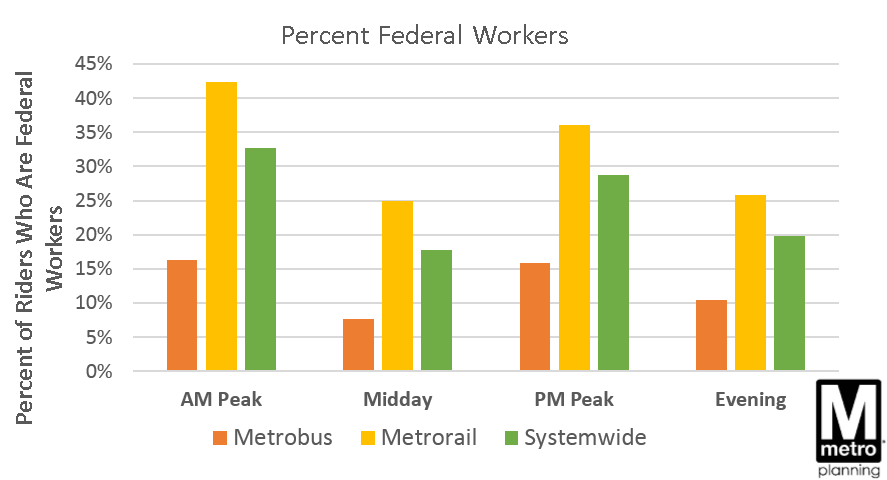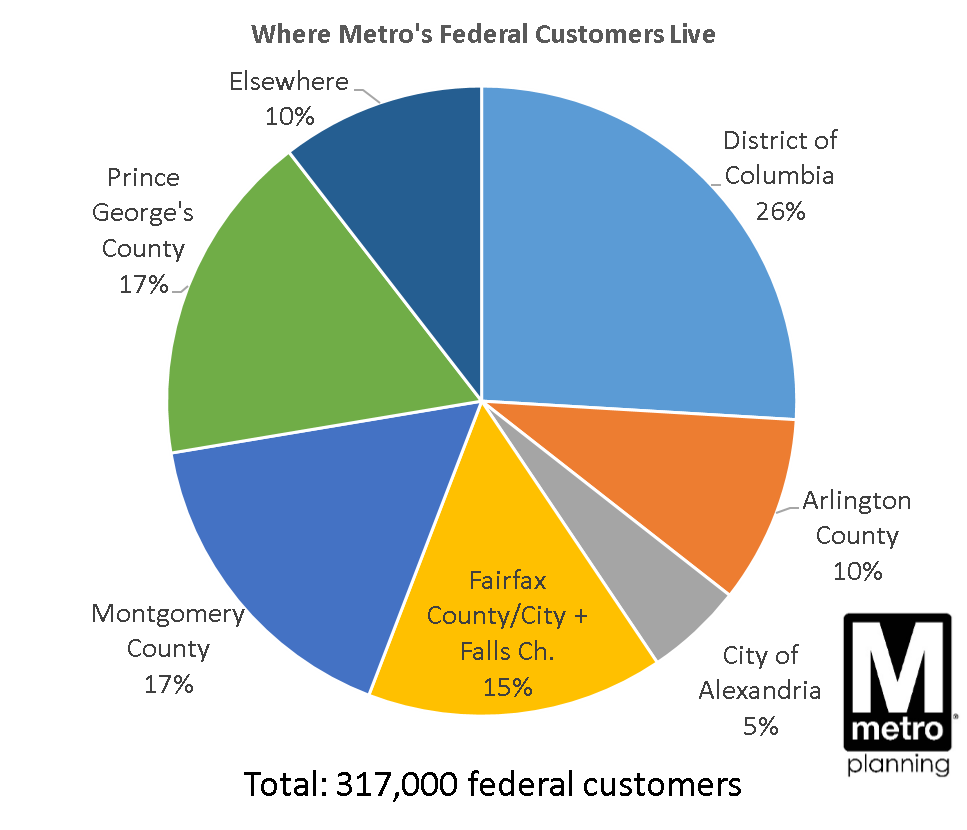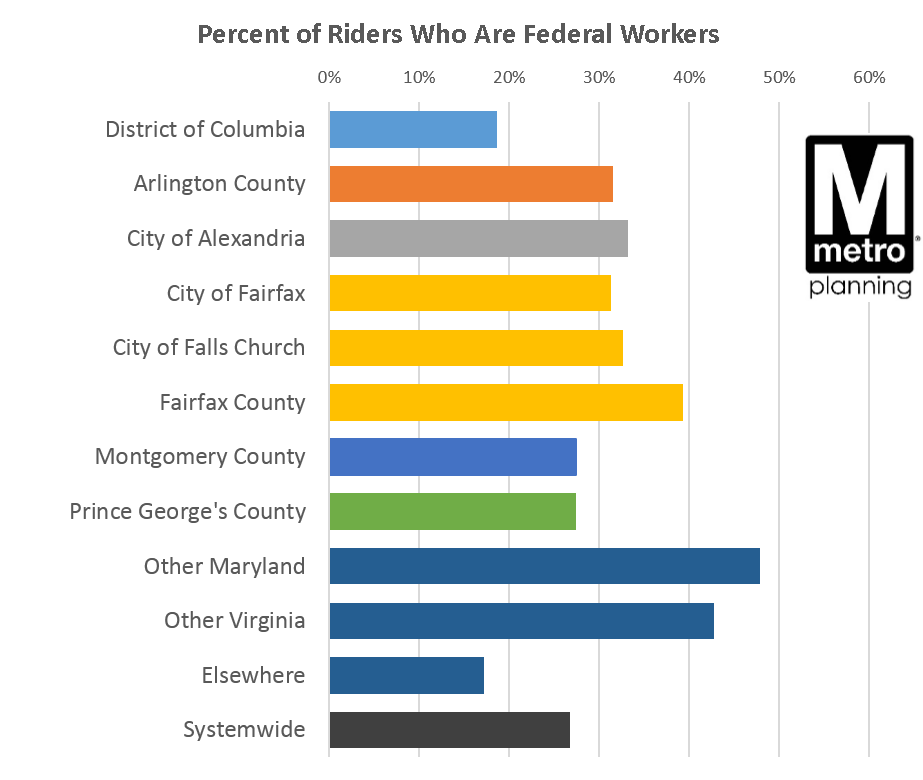Metro’s Federal Customers: A Snapshot (1 of 5)
Think Metro is all about getting the federal commuters to work? Think again!
(First in a series of posts on Metro’s customers who are Federal Government employees)
Just as the workforce in the Washington region has a sizeable share of federal workers, so has Metro’s ridership. Metro serves major federal employment centers downtown, and even boasts stations named for the federal sites they serve, like Federal Triangle, Medical Center, and Pentagon. But while Metro has a long supported the federal government, it’s a myth that Metro is all about federal government commuters and nothing more. Federal workers are a minority of riders and have been for years, and federal funding is playing an increasingly smaller role in Metro’s finances.
So just who are Metro’s federal customers? When and what do they ride? Where are they coming from and going to, and how has this changed in the last decade? The next series of posts seeks to answer just that, using passenger survey data (bus and rail) where customers identified as employees of the federal government or not (contractors excluded).
How Many, Where, and When? About 27% of all Metro weekday trips are made by federal workers – a total of 317,000 boardings across bus and rail. These federal employees can be anyone from a nurse at Walter Reed Medical Center, to a military officer at the Pentagon, to a Congressional staffer on Capitol Hill. The majority of these trips (255,000) are made on Metrorail, where federal workers make up 35% of all boardings (all-day). The remainder – just over 60,000 boardings from federal workers – happen on Metrobus, where riders are generally less likely to be federal workers (14% of all bus boardings are federal).
 The chart above shows how federal workers are more oriented to Metrorail at peak times than other riders. In fact, the federal share of riders reaches 42% during the morning on rail, and drops to 7% on bus during midday.
The chart above shows how federal workers are more oriented to Metrorail at peak times than other riders. In fact, the federal share of riders reaches 42% during the morning on rail, and drops to 7% on bus during midday.
Where do Federal Riders Live? The single biggest jurisdiction of residence for Metro’s federal customers is the District of Columbia, followed by counties in Maryland, and then northern Virginia, as shown in the chart below, for bus and rail combined.
However, these trends are broadly consistent with overall ridership, so the chart below shows the federal percentage of all riders who live in that jurisdiction. At 40% federal, Fairfax County is the “most federal” of all jurisdictions in Metro’s Compact area, while D.C. is the least at just under 20%. Riders who commute from even farther out (e.g., Howard, Anne Arundel, Prince William counties) are more likely to be bound for a federal job.
- Metro’s federal customers are just under a third of the overall customer base.
- They tend to be more concentrated on rail than bus, and more on peak than off-peak times.
- Many federal workers live in the District of Columbia, but this is still under 20% of D.C.’s large base of Metro riders.
- Riders from Northern Virginia and from beyond Metro’s service area are “more federal” than those living in Maryland.
In the next few posts, we’ll explore these workers’ travel patterns, fares, trends in recent years (on rail), and some questions for the future. Stay tuned!




Recent Comments